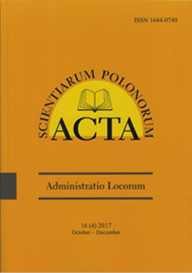Propozycja określania wartości rynkowej gruntów leśnych i zadrzewionych w warunkach ograniczonego rynku
Proposal to determine the market value of woodlands and wooded areas for a limited market
Author(s): Magdalena NowakSubject(s): National Economy
Published by: Wydawnictwo Uniwersytetu Warmińsko-Mazurskiego w Olsztynie
Keywords: woodlands and wooded areas;appraisal;limited market;
Summary/Abstract: The limited market of woodlands and wooded areas makes it necessary to make separate appraisals of land and components, i.e. a forest stand and stand density. In practice, it is impossible to make an appraisal of lands using a comparative approach and the current procedures of appraisal of woodlands and wooded areas rely on appraisal indices of lands. The results obtained with this method raise doubts as to whether they may be deemed actual market values. This study analyses the existing procedures of estimating forests and wooded land and proposes changes to these procedures in the event of the functioning of a limited market for this type of property. For the valuation of forests using the method of estimated indicators, their value is the product of the estimated indicator for a forest (depending on the type of habitat and tax district), the surface area and specific characteristics of the land and the price of 1 m3 of wood on the local market (according to the data provided by the Forest District Office). Over time, the value of a forest changes according to the price of 1 m3 of wood. Currently, the value of 1 ha of a forest rarely exceeds the level of PLN 10,000. Using the method of price analysis published by the Central Statistical Office (GUS) between 2004 and 2016, the following price changes were found during the period under analysis: – 1 m3 of wood, and an increase in the value of 1 ha of a forest of 59%; – 1 dt of rye grain, and an increase in the value of 1 ha of wooded land of 36%; – 1 ha of agricultural land, an increase of 494%; – 1 ha of farmland of 5th and 6th class of soil valuation, an increase of 535%. Such large disparities in prices found during the study, which increase over time, raise doubts about the procedures of forest and wooded land valuation the application of the method of estimated indicators of land. A new method of valuation of such land was proposed based on average prices of farmland with predominant areas of particular soil valuation class in the local market. The market value of forests, expressed as the fertility of forest habitats along with the valuation classes of farmland, were linked and justified. In addition, the proposed method takes into account specific characteristics of the forests and the wooded land being priced.
Journal: Acta Scientiarum Polonorum Administratio Locorum
- Issue Year: 16/2017
- Issue No: 3
- Page Range: 207-214
- Page Count: 8
- Language: Polish

